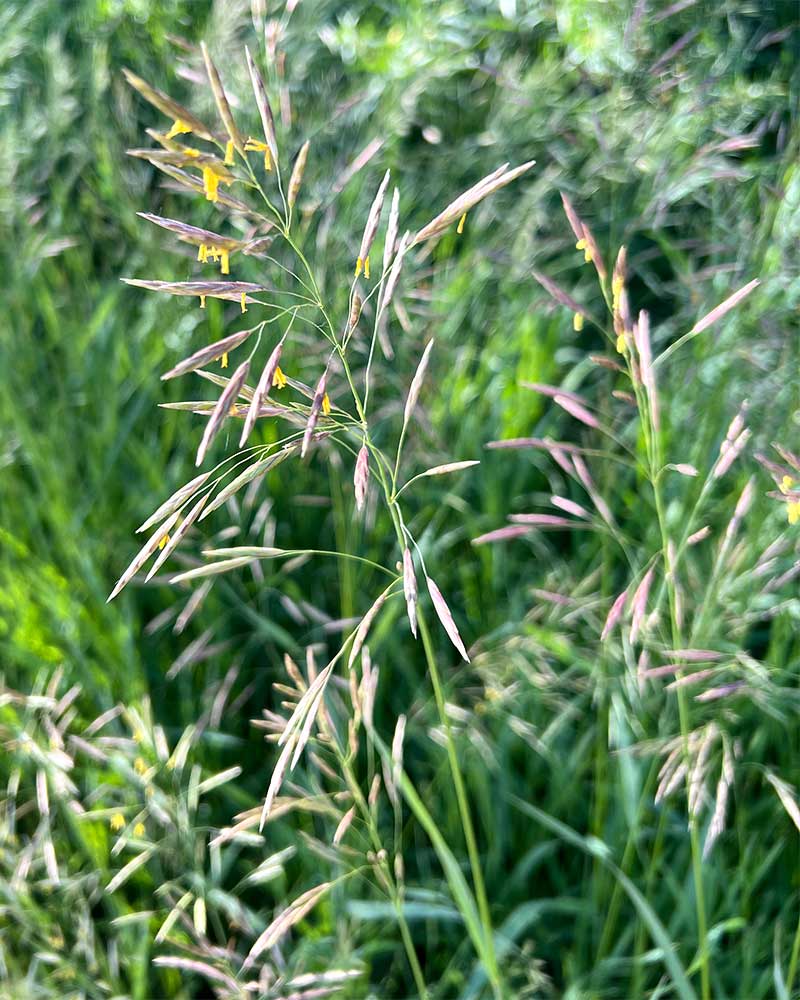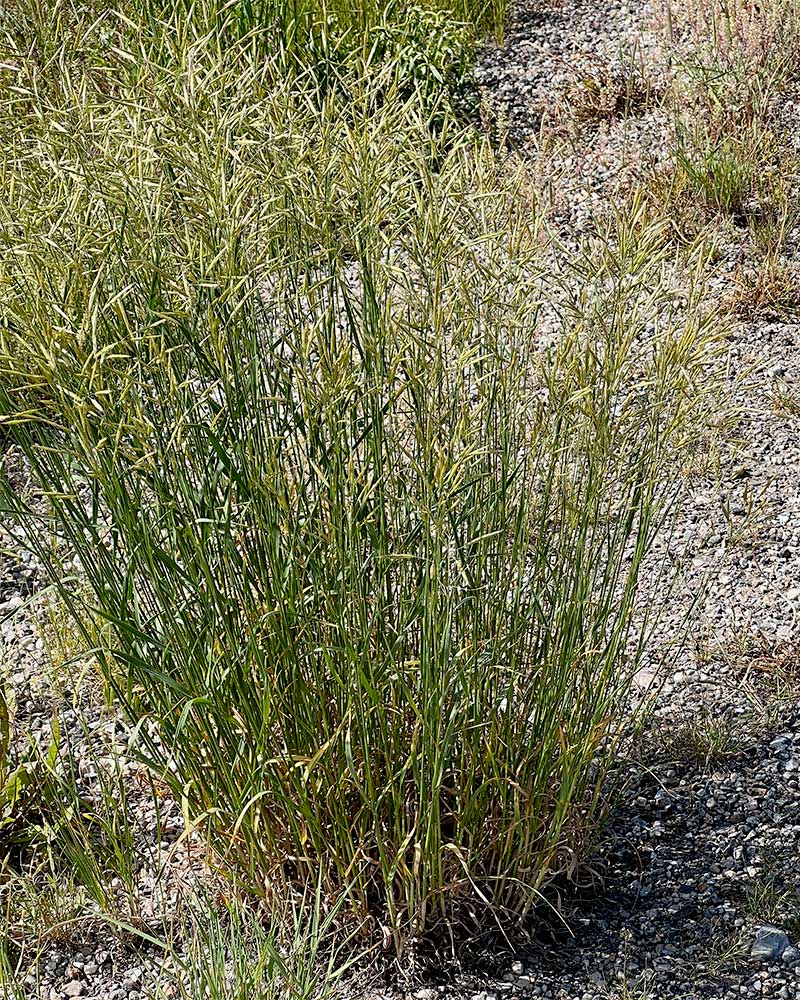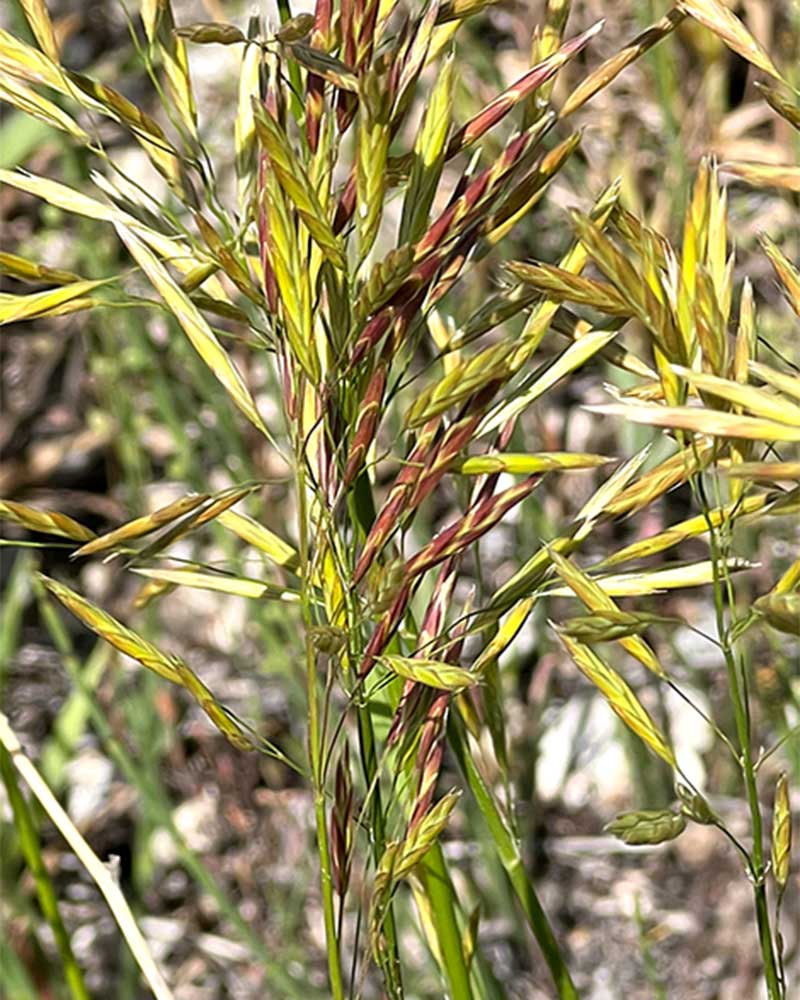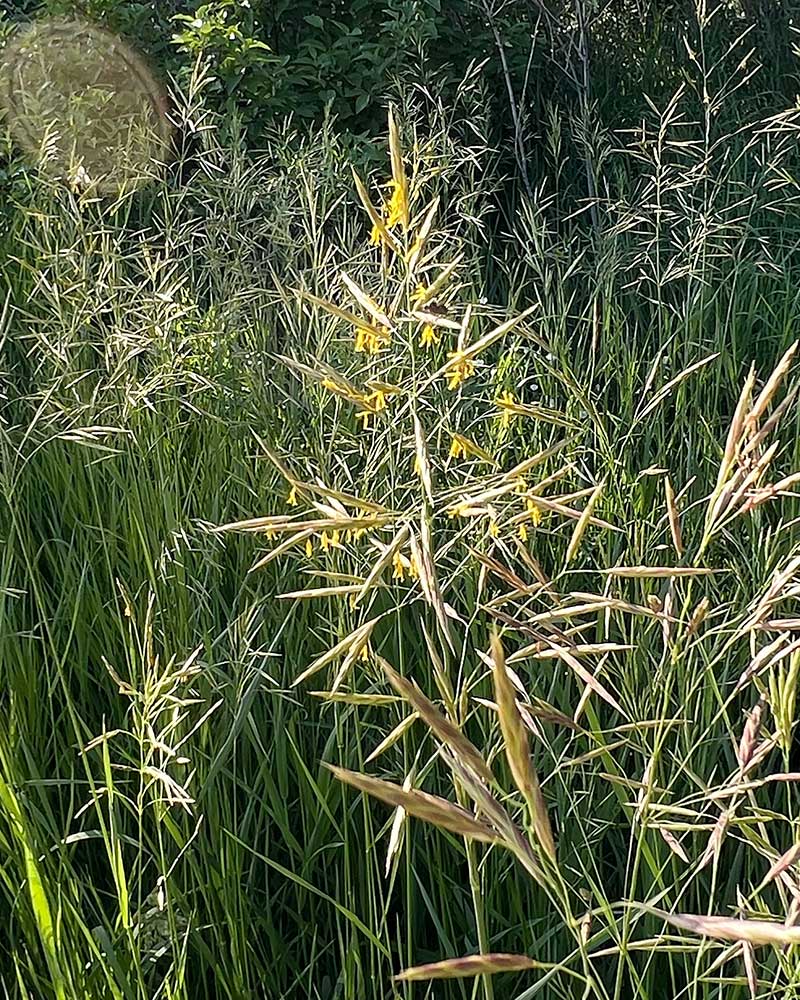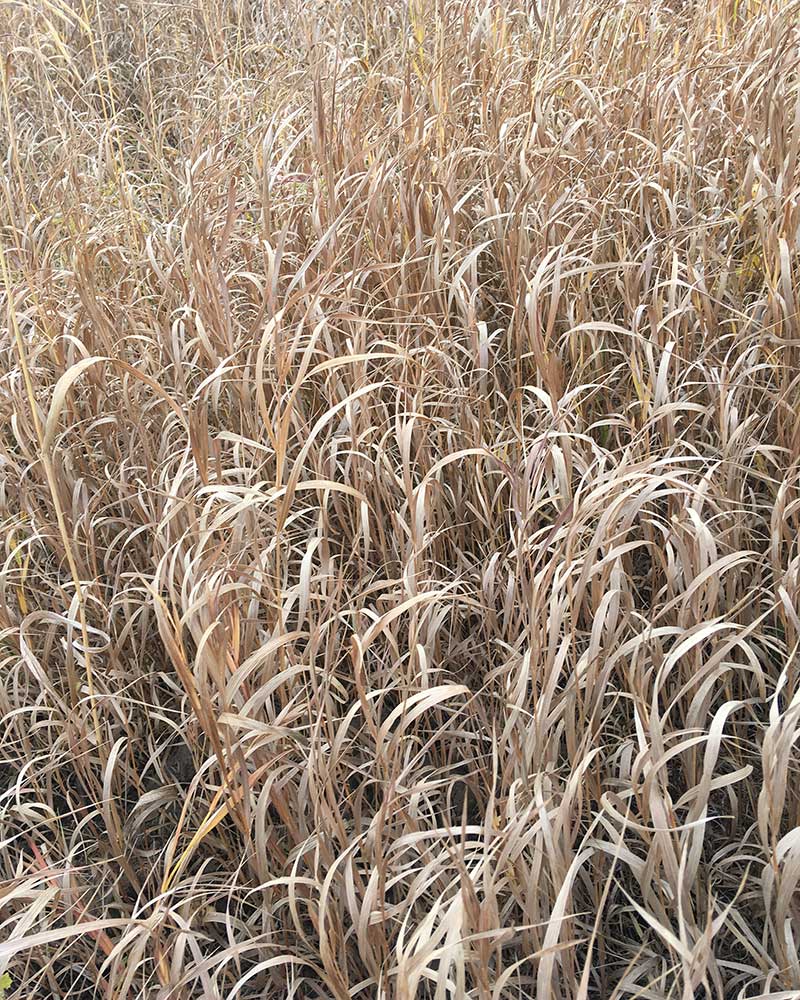Bromus inermis / smooth brome
- clump forming grass but clonally spreading
- erect, leafy
- in winter, leaves curl up (like ribbon)
- florescence is a nodding panicle, standing well above leaves
- spikelets bronze/purple at maturity; anthers yellow
Also known as: bromegrass, Austrian brome, Hungarian brome, Russian brome
Smooth brome is a grass with mixed reviews. On the one hand, it is good forage for both domestic and wild grazers and a good hay producer. As a sod former, it’s good for restoration and stabilization of stream banks. On the other hand, it’s highly invasive and not native. There are, as a result, major ecosystem rehab efforts, as in Grand Teton National Park, to get rid of it.
The plant is characterized by as an erect, leafy, long-lived perennial. With the inflorescences, it grows to 1½ to 3 ft tall. It is rhizomatous, commonly producing a dense sod but appearing as a clump on the surface. This is undoubtedly the source of both its good and bad reviews. It starts growth in early spring, and flowers from May to July; it reproduces from seeds, tillers, and rhizomes. It is tolerant of drought and temperature extremes, especially on the cold end, but it requires fertile soils. Besides fertilized fields, roadsides are pretty good for that. In deep, well-drained soils, its roots will grow down to 4 feet.
Bromes in general are cool season grasses (optimal growth below 75°). For smooth brome, the leaves are mostly glabrous, although occasionally slightly hairy, particularly at their bases. The longer leaves frequently twist from near the base so the underside and upperside are flipped. About midway up the blade, there is often a W-shaped wrinkle. Overall, the leaf blades are up to 14 inches long but less than ½ inch wide.
In the winter, the dried out old leaves curl up, sort of like ribbon if you’ve rubbed it with scissors. Based on these, the species is easily identified, at least in the Valley. There is a photo of this in the gallery.
Smooth brome inflorescences stand well above the leaves. Both in the flowering and seed-set stage, they droop or nod to one side. The inflorescence itself is an open panicle, 4 to 8 inches long. At flowering, it is erect with the individual panicle branches either sticking up (ascending) or sticking out (spreading). Each branch has 2 or more spikelets (flower clusters). These are stalked and each may have 6 to 13 fertile florets with one or more sterile florets at the tip. The nodding becomes more pronounced with maturity of the flowers.
Mature florets are bronze or purplish. After fertilization, they drop off individually, leaving the bracts (glumes) attached to the stalk. The individual grains that drop soon after are somewhat flattened, up to ¼ inch long, with bundle of white hairs at the tip.
One of the big problems (for me) of identifying grasses as I walk along is the number of different appearances they have through the year. I have tried to include at least several of these in the gallery.
| Family | |
|---|---|
| Inflorescence size | |
| Inflorescence type | |
| When? | |
| Where? |
